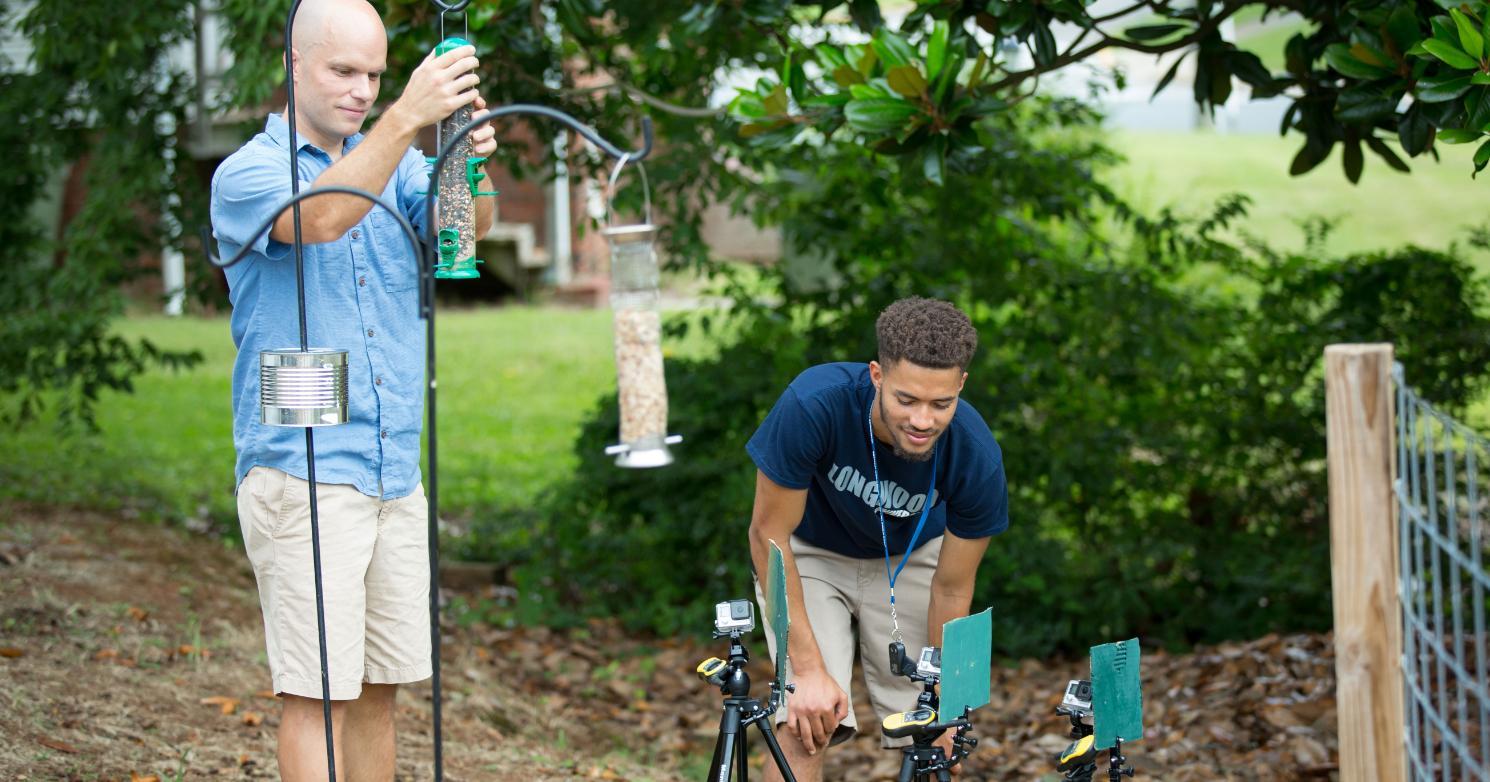

On the surface, it may seem like an odd way to spend a summer: alternately sitting in the shade staring at birdfeeders and sitting in a dark lab staring at still frames of birds in flight.
But for McCoy Williams '18, the payoff is in the moments when he sees that all the patience has borne results.
“There was this great blue jay,” he said, “it flew into the feeder just perfectly—I was lucky that I had just recalibrated the cameras—and took off. It took about two seconds, but it has been about the best footage I’ve gotten this summer.”
And while it may seem like an uncomplicated process—Williams watches for birds to approach a feeder he has set up and then remotely records a coordinated set of cameras designed to take slow-motion footage of the bird’s landing and takeoff—it’s anything but.
“There isn’t a lot of research into how birds land and take off in the wild. It’s odd—but many of the studies that are out there have to do with trained birds, and we’re trying to find out how it’s different in the wild.”
McCoy Williams '18
And while it may seem like an uncomplicated process—Williams watches for birds to approach a feeder he has set up and then remotely records a coordinated set of cameras designed to take slow-motion footage of the bird’s landing and takeoff—it’s anything but.
“There isn’t a lot of research into how birds land and take off in the wild,” he said. “It’s odd—but many of the studies that are out there have to do with trained birds, and we’re trying to find out how it’s different in the wild.”
What that means, practically, is hours spent waiting for birds to land in a specific spot, and many more hours spent analyzing the footage on a computer screen, going frame-by-frame to identify certain spots on the wings, tail and beak that will paint a clear picture of how a bird transitions from flight to landing, and from landing to flight.
And with a camera that shoots at 240 frames per second, even a two-second video requires thousands of clicks. And that’s only if the bird cooperates.
“There was one cardinal who looked like he was coming in really nicely, but then he landed on one of the cameras instead of the feeder,” said McCoy. “It messed up the calibration of the cameras for a little while so I missed a few other birds.”
The three slo-mo cameras that record the action have to be carefully aligned so that all angles of the bird’s approach, landing and takeoff are filmed and can be analyzed.
“We’re looking at how birds navigate through the transitional phases of flight,” said Dr. Brandon Jackson, assistant professor of biology who led the PRISM summer research project. “In the lab, birds tend to land the same way every time, but things change rapidly in the wild and we’re trying to see if they adjust on the fly, so to speak. It’s the kind of research that takes a lot of patience and a good understanding of flight mechanics. Nothing is predictable, so you have to be willing to make quick adjustments, and McCoy has been excellent at that.”

Leave a Comment